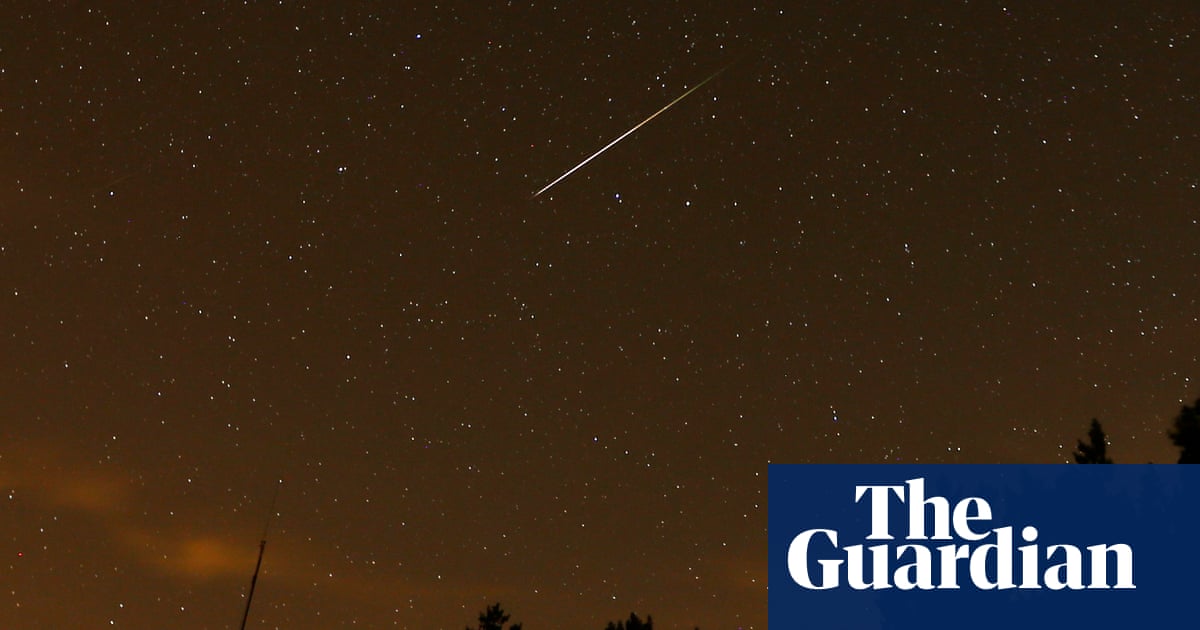If you’ve been waiting to make a wish, this weekend might be your best chance to spot a shooting star.
The Perseids, a meteor shower visible each year from late July to mid-August, peak this weekend and will be at their peak Sunday night into Monday morning. While the shower will be visible around the world, it is expected to be most spectacular in the Northern Hemisphere, delighting U.S. stargazers as national parks such as Joshua Tree in California prepare for a surge in visitors.
The Perseids pass through our atmosphere each year as Earth orbits debris left behind by Comet Swift-Tuttle. As this debris enters Earth’s atmosphere—sometimes at speeds of up to 160,000 mph—and begins to burn up, they appear as shooting stars. At the peak of the Perseid shower, observers can expect to see up to 100 such shooting stars every hour.
To make the most of this annual wonder, Douglas C Leonard, professor of astronomy at San Diego State University, recommends finding a dark corner of your neighborhood or heading out of town. “You want to get as far away from any light source as possible, and then find a spot with as clear a view of the entire sky as possible.”
“National and state parks are usually great for this, and some even have special programs designed specifically for viewing the Perseids,” Leonard says. But rest assured, the professor adds, “the Perseids are famous for producing very bright meteors that are visible even from inopportune locations, so no matter where you are, you’ll probably be rewarded for looking up a bit toward the peak of the shower.”
If you have the opportunity to spend a special rainy weekend, the national parks are known for having some of the darkest skies in the country. The best places to stargaze are at Fort Union National Monument in New Mexico, Great Sand Dunes National Park in Colorado, Joshua Tree in California, and Great Basin National Park in Nevada.
Some national parks have been overrun with visitors during past astronomical events, such as the total solar eclipse earlier this year. The huge crowds that gathered in Joshua Tree for last year’s Perseids prompted park officials to ask visitors to stay home on the second night of the event.
This year, Joshua Tree officials warned visitors and nearby towns to prepare for weekend crowds. “Local communities and businesses should expect increased traffic into the park,” the park said in a news release. “Due to the park’s proximity to major cities, traffic can be heavy and could cause delays of up to several hours at the park entrance.”
If you can only get outside for a few minutes this weekend, don’t worry: You’ll still be able to catch a few shooting stars. Leonard just recommends taking a few simple steps to prepare: “You need to have eyes that are well adapted to the dark, which is only possible if you’re away from local lighting,” like streetlights and your phone.
The moon is expected to set around midnight local time on Sunday, just as the Perseids are at their peak. That means the best time to spot shooting stars will be after 1 a.m. If you want to maximize the number of shooting stars you can see, Leonard suggests waiting until 3 or 4 a.m. Then, just look up—no special equipment required.
“This is an astronomical event that is best observed with your eyes!” Leonard says. “What you want is to have the best possible, unobstructed view of the night sky. So, lie down and keep looking up.”



